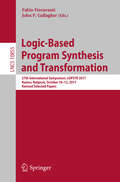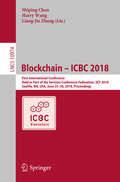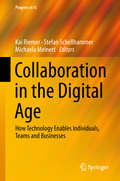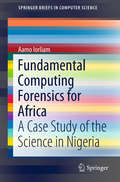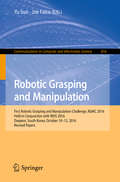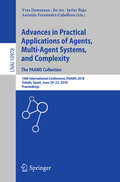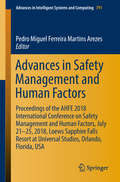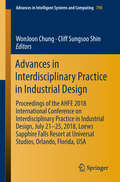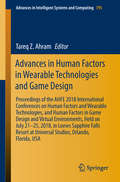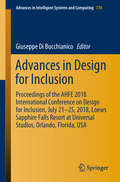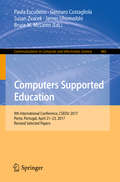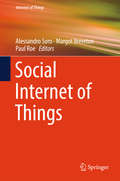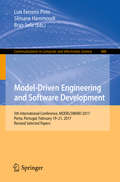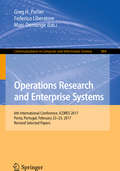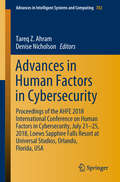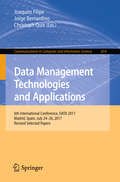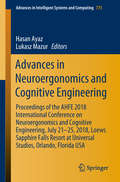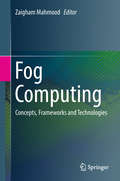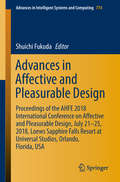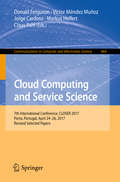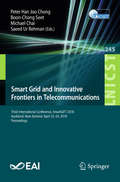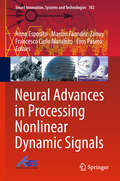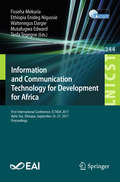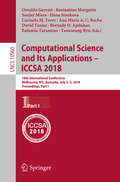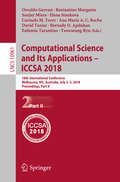- Table View
- List View
Logic-Based Program Synthesis and Transformation: 27th International Symposium, LOPSTR 2017, Namur, Belgium, October 10-12, 2017, Revised Selected Papers (Lecture Notes in Computer Science #10855)
by John P. Gallagher Fabio FioravantiThis book constitutes the thoroughly refereed post-conference proceedings of the 27th International Symposium on Logic-Based Program Synthesis and Transformation, LOPSTR 2017, held in Namur, Belgium, in October 2017. The 19 revised full papers were carefully reviewed and selected from 29 submissions. In addition to the 19 revised papers, this volume includes the abstracts of the invited talks by three outstanding speakers: Sumit Gulwani, Marieke Huisman, and Grigore Roşu. The aim of the LOPSTR series is to stimulate and promote international research and collaboration on logic-based program development. LOPSTR is open to contributions in all aspects of logic-based program development, all stages of the software life cycle, and issues of both programming-in-the-small and programming-in-the-large. LOPSTR traditionally solicits contributions, in any language paradigm, in the areas of synthesis, specification, transformation, analysis and verification, specialization, testing and certification, composition, program/model manipulation, optimization, transformational techniques in SE, inversion, applications, and tools.
Blockchain – ICBC 2018: First International Conference, Held as Part of the Services Conference Federation, SCF 2018, Seattle, WA, USA, June 25-30, 2018, Proceedings (Lecture Notes in Computer Science #10974)
by Liang-Jie Zhang Shiping Chen Harry WangThis book constitutes the refereed proceedings of the First International Conference on Blockchain, ICBC 2018, held as part of the Services Conference Federation, SCF 2018, in Seattle, USA, in June 2018. The 16 full papers and 7 short papers presented were carefully reviewed and selected from 36 submissions. The papers cover a wide range of topics in blockchain technologies, platforms, solutions and business models such as new blockchain architecture, platform constructions, blockchain development and blockchain services technologies as well as standards, and blockchain services innovation lifecycle including enterprise modeling, business consulting, solution creation, services orchestration, services optimization, services management, services marketing, business process integration and management.
Collaboration in the Digital Age: How Technology Enables Individuals, Teams and Businesses (Progress in IS)
by Kai Riemer Stefan Schellhammer Michaela MeinertThis book examines how digital technologies enable collaboration as a way for individuals, teams and businesses to connect, create value, and harness new opportunities. Digital technologies have brought the world closer together but also created new barriers and divides. While it is now possible to connect almost instantly and seamlessly across the globe, collaboration comes at a cost; it requires new skills and hidden ‘collaboration work’, and the need to renegotiate the fair distribution of value in multi-stakeholder network arrangements. Presenting state-of-the-art research, case studies, and leading voices in the field, the book provides academics and professionals with insights into the diverse powers of collaboration in the digital age, spanning collaboration among professionals, organisations, and consumers. It brings together contributions from scholars interested in the collaboration of teams, cooperatives, projects, and new cooperative systems, covering a range of sectors from the sharing economy, health care, large project businesses to public sector collaboration.
Fundamental Computing Forensics for Africa: A Case Study of the Science in Nigeria (SpringerBriefs in Computer Science)
by Aamo IorliamThis book presents a general introduction to the computational aspects of forensic science, covering the different tools needed for forensic investigations, the importance of forensics and biometrics, and the use of Benford’s law for biometrics and network traffic analysis. It specifically focuses on the application of these techniques in Africa, and how they can be of benefit in the investigation of crime in Nigeria in particular.
Robotic Grasping and Manipulation: First Robotic Grasping and Manipulation Challenge, RGMC 2016, Held in Conjunction with IROS 2016, Daejeon, South Korea, October 10–12, 2016, Revised Papers (Communications in Computer and Information Science #816)
by Yu Sun Joe FalcoThis book constitutes the refereed proceedings of the First Robotic Grasping and Manipulation Challenge, RGMC 2016, held at IROS 2016, Daejeon, South Korea, in October 2016.The 13 revised full papers presented were carefully reviewed and are describing the rules, results, competitor systems and future directions of the inaugural competition. The competition was designed to allow researchers focused on the application of robot systems to compare the performance of hand designs as well as autonomous grasping and manipulation solutions across a common set of tasks. The competition was comprised of three tracks that included hand-in-hand grasping, fully autonomous grasping, and simulation.
Advances in Practical Applications of Agents, Multi-Agent Systems, and Complexity: 16th International Conference, PAAMS 2018, Toledo, Spain, June 20–22, 2018, Proceedings (Lecture Notes in Computer Science #10978)
by Bo An Javier Bajo Antonio Fernández-Caballero Yves DemazeauThis book constitutes the proceedings of the 16th International Conference on Practical Applications of Agents and Multi-Agent Systems, PAAMS 2018, held in Toledo, Spain, in June 2018. The 20 regular and 19 demo papers presented in this volume were carefully reviewed and selected from 57 submissions. They deal with the application and validation of agent-based models, methods, and technologies in a number of key applications areas, such as: energy and security; engineering and tools; evaluation and ethics; negotiation and organisations; personalization and learning; simulation applications; simulation platforms; social networks and humans. The book also contains two invited talks in full paper length.
Advances in Safety Management and Human Factors: Proceedings of the AHFE 2018 International Conference on Safety Management and Human Factors, July 21-25, 2018, Loews Sapphire Falls Resort at Universal Studios, Orlando, Florida, USA (Advances in Intelligent Systems and Computing #791)
by Pedro Miguel ArezesThis book discusses the latest findings on ensuring employees’ safety, health, and welfare at work. It combines a range of disciplines – e.g. work physiology, health informatics, safety engineering, workplace design, injury prevention, and occupational psychology – and presents new strategies for safety management, including accident prevention methods such as performance testing and participatory ergonomics. The book, which is based on the AHFE 2018 International Conference on Safety Management and Human Factors, held on July 21–25, 2018, in Orlando, Florida, USA, provides readers, including decision makers, professional ergonomists and program managers in government and public authorities, with a timely snapshot of the state of the art in the field of safety, health, and welfare management. It also addresses agencies such as the Occupational Safety and Health Administration (OSHA) and the National Institute for Occupational Safety and Health (NIOSH), as well as other professionals dealing with occupational safety and health.
Advances in Interdisciplinary Practice in Industrial Design: Proceedings of the AHFE 2018 International Conference on Interdisciplinary Practice in Industrial Design, July 21-25, 2018, Loews Sapphire Falls Resort at Universal Studios, Orlando, Florida, USA (Advances in Intelligent Systems and Computing #790)
by Cliff Sungsoo Shin WonJoon ChungThis book provides readers with a snapshot of cutting-edge methods and procedures in industrial design, with a particular focus on human-centered and user-experience design, service design, sustainable design and applications of virtual & augmented reality. Reporting on both theoretical and practical investigations aimed at improving industrial design through interdisciplinary collaboration, it covers a wide range of topics – from design strategies to product research and planning, exhibit design, as well as new materials and color research. Based on the AHFE 2018 International Conference on Interdisciplinary Practice in Industrial Design, held on July 21–25, 2018, in Orlando, Florida, USA, the book offers a timely guide for industrial designers, production engineers and computer scientists.
Advances in Human Factors in Wearable Technologies and Game Design: Proceedings of the AHFE 2018 International Conferences on Human Factors and Wearable Technologies, and Human Factors in Game Design and Virtual Environments, Held on July 21–25, 2018, in Loews Sapphire Falls Resort at Universal Studios, Orlando, Florida, USA (Advances in Intelligent Systems and Computing #795)
by Tareq Z. AhramThis book focuses on the human aspects of wearable technologies and game design, which are often neglected. It shows how user centered practices can optimize wearable experience, thus improving user acceptance, satisfaction and engagement towards novel wearable gadgets. It describes both research and best practices in the applications of human factors and ergonomics to sensors, wearable technologies and game design innovations, as well as results obtained upon integration of the wearability principles identified by various researchers for aesthetics, affordance, comfort, contextual-awareness, customization, ease of use, ergonomy, intuitiveness, obtrusiveness, information overload, privacy, reliability, responsiveness, satisfaction, subtlety, user friendliness and wearability. The book is based on the AHFE 2018 Conference on Human Factors and Wearable Technologies and the AHFE 2018 Conference on Human Factors in Game Design and Virtual Environments , held on July 21–25, 2018 in Orlando, Florida, and addresses professionals, researchers, and students dealing with the human aspects of wearable, smart and/or interactive technologies and game design research.
Advances in Design for Inclusion: Proceedings of the AHFE 2018 International Conference on Design for Inclusion, July 21-25, 2018, Loews Sapphire Falls Resort at Universal Studios, Orlando, Florida, USA (Advances in Intelligent Systems and Computing #776)
by Giuseppe Di BucchianicoThis book addresses a range of topics in design, such as universal design, design for all, digital inclusion, universal usability, and accessibility of technologies for people regardless of their age, financial situation, education, geographic location, culture and language. It especially focuses on accessibility for people with auditory, cognitive, neurological, and visual impairments, ageing populations, and mobility for those with special physical needs. The book explores some of the overlaps between inclusive design and web accessibility to help managers, designers, developers, policy makers, and researchers optimize their efforts in these areas. Based on the AHFE 2018 International Conference on Design for Inclusion, held on July 21–25, 2018, in Orlando, Florida, USA, it discusses new design technologies and highlights the disparate needs of the individuals within a community. Thanks to its multidisciplinary approach, it is a valuable resource for readers from various backgrounds, providing them a timely, practice-oriented guide to design for inclusion.
Computers Supported Education: 9th International Conference, CSEDU 2017, Porto, Portugal, April 21-23, 2017, Revised Selected Papers (Communications in Computer and Information Science #865)
by Susan Zvacek Paula Escudeiro James Uhomoibhi Gennaro Costagliola Bruce M. McLarenThis book constitutes the thoroughly refereed proceedings of the 9th International Conference on Computer Supported Education, CSEDU 2017, held in Porto, Portugal, in April 2017. The 22 revised full papers were carefully reviewed and selected from 179 submissions. The papers deal with the following topics: new educational environments, best practices and case studies of innovative technology-based learning strategies, institutional policies on computer-supported education including open and distance education.
Social Internet of Things (Internet of Things)
by Alessandro Soro Margot Brereton Paul RoeThe aim of this book is to stimulate research on the topic of the Social Internet of Things, and explore how Internet of Things architectures, tools, and services can be conceptualized and developed so as to reveal, amplify and inspire the capacities of people, including the socialization or collaborations that happen through or around smart objects and smart environments. From new ways of negotiating privacy, to the consequences of increased automation, the Internet of Things poses new challenges and opens up new questions that often go beyond the technology itself, and rather focus on how the technology will become embedded in our future communities, families, practices, and environment, and how these will change in turn.
Model-Driven Engineering and Software Development: 5th International Conference, MODELSWARD 2017, Porto, Portugal, February 19-21, 2017, Revised Selected Papers (Communications in Computer and Information Science #880)
by Slimane Hammoudi Luís Ferreira Pires Bran SelicThis book constitutes thoroughly revised and selected papers from the 5th International Conference on Model-Driven Engineering and Software Development, MODELSWARD 2017, held in Porto, Portugal, in February 2017. The 20 thoroughly revised and extended papers presented in this volume were carefully reviewed and selected from 91 submissions. They contribute to the development of highly relevant research trends in model-driven engineering and software development such as methodologies for MDD development and exploitation, model-based testing, model simulation, domain-specific modeling, code generation from models, new MDD tools, multi-model management, model evolution, and industrial applications of model-based methods and technologies.
Operations Research and Enterprise Systems: 6th International Conference, ICORES 2017, Porto, Portugal, February 23–25, 2017, Revised Selected Papers (Communications in Computer and Information Science #884)
by Greg H. Parlier Federico Liberatore Marc DemangeThis book constitutes revised selected papers from the 6th International Conference on Operations Research and Enterprise Systems, ICORES 2017, held in Porto, Portugal, in February 2017. The 15 papers presented in this volume were carefully reviewed and selected from a total of 90 submissions. They are organized in topical sections named: methodologies and technologies; and applications.
Advances in Human Factors in Cybersecurity: Proceedings of the AHFE 2018 International Conference on Human Factors in Cybersecurity, July 21-25, 2018, Loews Sapphire Falls Resort at Universal Studios, Orlando, Florida, USA (Advances in Intelligent Systems and Computing #782)
by Denise Nicholson Tareq Z. AhramThis book reports on the latest research and developments in the field of cybersecurity, particularly focusing on personal security and new methods for reducing human error and increasing cyber awareness, as well as innovative solutions for increasing the security of advanced Information Technology (IT) infrastructures. It covers a broad range of topics, including methods for human training; novel cyber-physical and process-control systems; social, economic, and behavioral aspects of cyberspace; issues concerning the cybersecurity index; security metrics for enterprises; and risk evaluation. Based on the AHFE 2018 International Conference on Human Factors in Cybersecurity, held on July 21–25, 2018, in Orlando, Florida, USA, the book not only presents innovative cybersecurity technologies, but also discusses emerging threats, current gaps in the available systems, and future challenges that can be successfully overcome with the help of human factors research.
Data Management Technologies and Applications: 6th International Conference, DATA 2017, Madrid, Spain, July 24–26, 2017, Revised Selected Papers (Communications in Computer and Information Science #814)
by Joaquim Filipe Jorge Bernardino Christoph QuixThis book constitutes the thoroughly refereed proceedings of the 6th International Conference on Data Management Technologies and Applications, DATA 2017, held in Madrid, Spain, in July 2017. The 13 revised full papers were carefully reviewed and selected from 66 submissions. The papers deal with the following topics: databases, big data, data mining, data management, data security, and other aspects of information systems and technology involving advanced applications of data.
Advances in Neuroergonomics and Cognitive Engineering: Proceedings of the AHFE 2018 International Conference on Neuroergonomics and Cognitive Engineering, July 21–25, 2018, Loews Sapphire Falls Resort at Universal Studios, Orlando, Florida USA (Advances in Intelligent Systems and Computing #775)
by Hasan Ayaz Lukasz MazurThis book offers a broad perspective on the field of cognitive engineering and neuroergonomics, covering emerging practices and future trends toward the harmonious integration of human operators and computer systems. It presents novel theoretical findings on mental workload and stress, activity theory, human reliability, error and risk, and neuroergonomic measures alike, together with a wealth of cutting-edge applications. Further, the book describes key advances in our understanding of cognitive processes, including mechanisms of perception, memory, reasoning, and motor response, with a special emphasis on their role in interactions between humans and other elements of computer-based systems. Based on the AHFE 2018 affiliated conference on Neuroergonomics and Cognitive Engineering, held on July 21–25, 2018, in Orlando, Florida, USA, it provides readers with a comprehensive overview of the current challenges in cognitive computing and factors influencing human performance.
Fog Computing: Concepts, Frameworks and Technologies
by Zaigham MahmoodThis authoritative text/reference describes the state of the art of fog computing, presenting insights from an international selection of renowned experts. A particular focus is provided on development approaches, architectural mechanisms, and measurement metrics for building smart adaptable environments. The coverage also includes important related topics such as device connectivity, security and interoperability, and communication methods.Topics and features: introduces the core concepts and principles of fog computing, and reviews the latest research and best practice relating to fog/edge environments; discusses the vision for an Internet of Things (IoT) in terms of fog computing and other related distributed computing paradigms, such as cloud computing; presents a survey of the key issues and broader aspects of the fog paradigm, as well as the factors that affect adoption of fog computing; examines frameworks and methodologies for fog-based architecture design, improving performance, and measuring quality of experience; proposes tools and methodologies for analyzing large amounts of sensor data from smart city initiatives; describes approaches for designing robust services, management of data-intensive applications, context-aware data analysis, and vehicular networking; identifies potential future research directions and technological innovations in relation to distributed computing environments such as the IoT.This enlightening volume offers essential perspectives for researchers of distributed computing and computer networking, as well as for advanced undergraduate and graduate students pursuing interests in this area. Professional engineers seeking to enhance security and connectivity in their IoT systems will also find this work to be a valuable reference.
Advances in Affective and Pleasurable Design: Proceedings of the AHFE 2018 International Conference on Affective and Pleasurable Design, July 21-25, 2018, Loews Sapphire Falls Resort at Universal Studios, Orlando, Florida, USA (Advances in Intelligent Systems and Computing #774)
by Shuichi FukudaThis book discusses the latest advances in affective and pleasurable design. Further, it reports on important theoretical and practical issues, covering a wealth of topics including aesthetics in product and system design, design-driven innovation, affective computing, evaluation tools for emotion, Kansei engineering for products and services, and many more. Based on the AHFE 2018 International Conference on Affective and Pleasurable Design, held on July 21–25, 2018, in Orlando, Florida, USA, the book provides a timely survey and inspiring guide for all researchers and professionals involved in design, e.g. industrial designers, emotion designers, ethnographers, human–computer interaction researchers, human factors engineers, interaction designers, mobile product designers, and vehicle system designers.
Cloud Computing and Service Science: 7th International Conference, CLOSER 2017, Porto, Portugal, April 24–26, 2017, Revised Selected Papers (Communications in Computer and Information Science #864)
by Markus Helfert Donald Ferguson Jorge Cardoso Víctor Méndez Muñoz Claus PahlThis book constitutes extended, revised and selected papers from the 7th Ith International Conference on Cloud Computing and Service Science, CLOSER 2017, held in Porto, Portugal, in April 2017. The 16 papers presented in this volume were carefully reviewed and selected from a total of 123 submissions. CLOSER 2017 focused on the emerging area of Cloud Computing, inspired by some latest advances that concern the infrastructure, operations and available services throughout the global network.
Smart Grid and Innovative Frontiers in Telecommunications: Third International Conference, SmartGIFT 2018, Auckland, New Zealand, April 23-24, 2018, Proceedings (Lecture Notes of the Institute for Computer Sciences, Social Informatics and Telecommunications Engineering #245)
by Peter Han Chong Boon-Chong Seet Michael Chai Saeed Ur RehmanThis book constitutes the proceedings of the Third International Conference on Smart Grid and Innovative Frontiers in Telecommunications, SmartGIFT, held in Auckland, New Zealand, in April 2018. The 28 revised full papers presented were carefully reviewed and selected from 44 submissions. They focus on smart grid as the next generation of electrical grid, which will enable the smart integration of conventional, renewable and distributed power generation, energy storage, transmission and distribution, and demand management. The benefits of smart grid include enhanced reliability and resilience, higher intelligence and optimized control, decentralized operation, higher operational efficiency, more efficient demand management, and better power quality.
Neural Advances in Processing Nonlinear Dynamic Signals (Smart Innovation, Systems and Technologies #102)
by Anna Esposito Marcos Faundez-Zanuy Francesco Carlo Morabito Eros PaseroThis book proposes neural networks algorithms and advanced machine learning techniques for processing nonlinear dynamic signals such as audio, speech, financial signals, feedback loops, waveform generation, filtering, equalization, signals from arrays of sensors, and perturbations in the automatic control of industrial production processes. It also discusses the drastic changes in financial, economic, and work processes that are currently being experienced by the computational and engineering sciences community.Addresses key aspects, such as the integration of neural algorithms and procedures for the recognition, the analysis and detection of dynamic complex structures and the implementation of systems for discovering patterns in data, the book highlights the commonalities between computational intelligence (CI) and information and communications technologies (ICT) to promote transversal skills and sophisticated processing techniques.This book is a valuable resource fora. The academic research communityb. The ICT marketc. PhD students and early stage researchersd. Companies, research institutese. Representatives from industry and standardization bodies
Information and Communication Technology for Development for Africa: First International Conference, ICT4DA 2017, Bahir Dar, Ethiopia, September 25–27, 2017, Proceedings (Lecture Notes of the Institute for Computer Sciences, Social Informatics and Telecommunications Engineering #244)
by Ethiopia Enideg Nigussie Waltenegus Dargie Fisseha Mekuria Mutafugwa Edward Tesfa TegegneThis book constitutes the proceedings of the First International Conference on Information and Communication Technology for Development for Africa, ICT4DA 2017, held in Bahir Dar, Ethiopia, in September 2017. The 31 revised full papers presented were carefully reviewed and selected from 72 submissions. The papers address the impact of ICT in fostering economic development in Africa. In detail they cover the following topics: e-services, natural language processing, intelligent systems, mobile and wireless communication, privacy and security.
Computational Science and Its Applications – ICCSA 2018: 18th International Conference, Melbourne, VIC, Australia, July 2-5, 2018, Proceedings, Part I (Lecture Notes in Computer Science #10960)
by Osvaldo Gervasi Beniamino Murgante Sanjay Misra Carmelo M. Torre David Taniar Bernady O. Apduhan Elena Stankova Ana Maria Rocha Eufemia Tarantino Yeonseung RyuThe five volume set LNCS 10960 until 10964 constitutes the refereed proceedings of the 18th International Conference on Computational Science and Its Applications, ICCSA 2018, held in Melbourne, Australia, in July 2018. Apart from the general tracks, ICCSA 2018 also includes 34 international workshops in various areas of computational sciences, ranging from computational science technologies, to specific areas of computational sciences, such as computer graphics and virtual reality. The total of 265 full papers and 10 short papers presented in the 5-volume proceedings set of ICCSA 2018, were carefully reviewed and selected from 892 submissions.
Computational Science and Its Applications – ICCSA 2018: 18th International Conference, Melbourne, VIC, Australia, July 2-5, 2018, Proceedings, Part II (Lecture Notes in Computer Science #10961)
by Osvaldo Gervasi Beniamino Murgante Sanjay Misra Carmelo M. Torre David Taniar Bernady O. Apduhan Elena Stankova Ana Maria Rocha Eufemia Tarantino Yeonseung RyuThe five volume set LNCS 10960 until 10964 constitutes the refereed proceedings of the 18th International Conference on Computational Science and Its Applications, ICCSA 2018, held in Melbourne, Australia, in July 2018. Apart from the general tracks, ICCSA 2018 also includes 34 international workshops in various areas of computational sciences, ranging from computational science technologies, to specific areas of computational sciences, such as computer graphics and virtual reality. The total of 265 full papers and 10 short papers presented in the 5-volume proceedings set of ICCSA 2018, were carefully reviewed and selected from 892 submissions.
